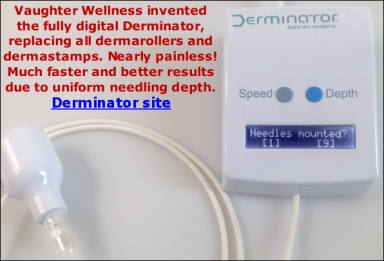Dear Sarah,
I have type IV (Asian), combination skin. I had a course of Accutane last year for acne.
I underwent ablative fractional CO2 laser for facial acne scarring in November 2012.
Since then, I’ve presented with persistent redness at the sites treated most aggressively (forehead, temples and cheeks).
Two months ago, however, as these areas of redness slowly began to resolve, it revealed areas of delayed onset hypopigmentation (3 months post-op). The hypopigmentation (lighter skin) presents in the size and shape of the laser head/area treated (2-3cm).
As of today (2 months since the hypopigmentation presented and 5 months post-op) the hypopigmentation has not improved and, perhaps, as the transient pinkness resolved, has become slightly whiter. I have strictly avoided sun expose since the treatment.
I have tried Protopic for the past 4 weeks with no results. I have also recently purchased a NB-UVB lamp.
The hypopigmentation is very distressing for me and I am desperate for your help.
I have been a frequent visitor to your forums for the past few months and I would now like to attempt needling.
I want to treat myself correctly, therefore please kindly advise me on the following:-
1. What rollers, stamps, single needles should I purchase?
2. What needle lengths should I choose?
3. What is the most efficacious treatment method/plan? For example:-
1. Single needling with (x) needle at the hypopigmented edges at a 15 degree angle towards the hypopigmentation to promote peripheral melanocytes migration.
2. Stamp hypopigmentation using (x) dermastamp to prepare area for melanocytes transfer.
3. Attempt melanocytes transfer using (x) dermastamp/dermaroller from (x) donor region.
4. Cover the area in an occlusive dressing using (x) for (x) duration to promote melanocyte bedding.
5. After (x) length of healing time, cover around the hypopigmentation with sunscreen SPF (x) to avoid unwanted hyperpigmentation.
6. Expose needled area to NB-UVB lamp (safer and more efficacious wavelength than the sun and avoids UVA hyperpigmentation) to promote new melanocyte proliferation for (x) seconds.
7. Cover area with Protopic to suppress melanocyte death.
8. Use NB-UVB light and Protopic everyday.
9. Repeat the above needling every (x) days.
Yours faithfully,





